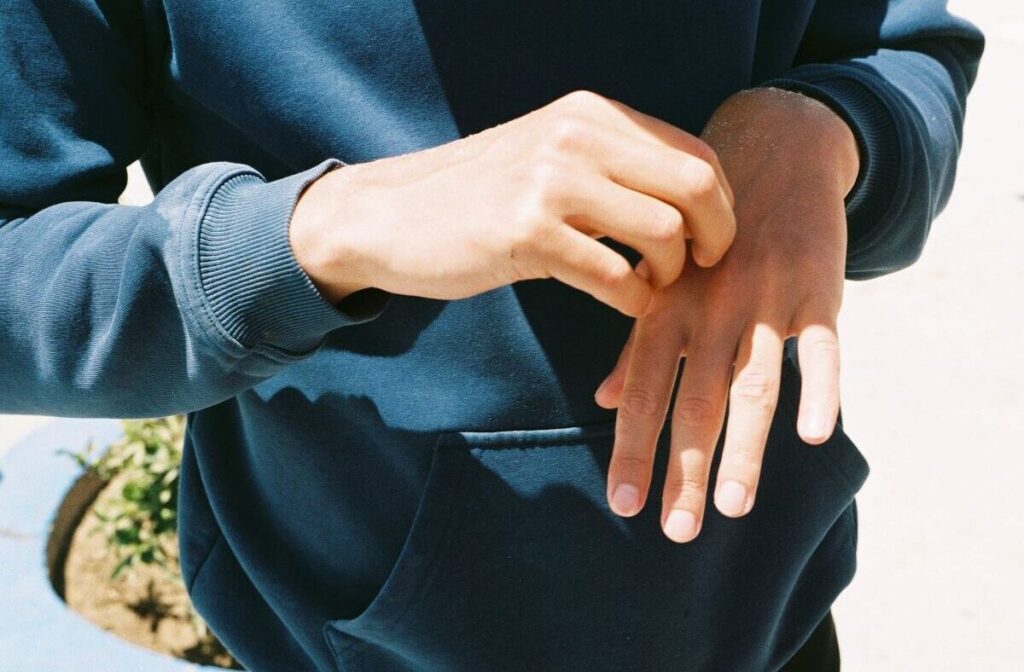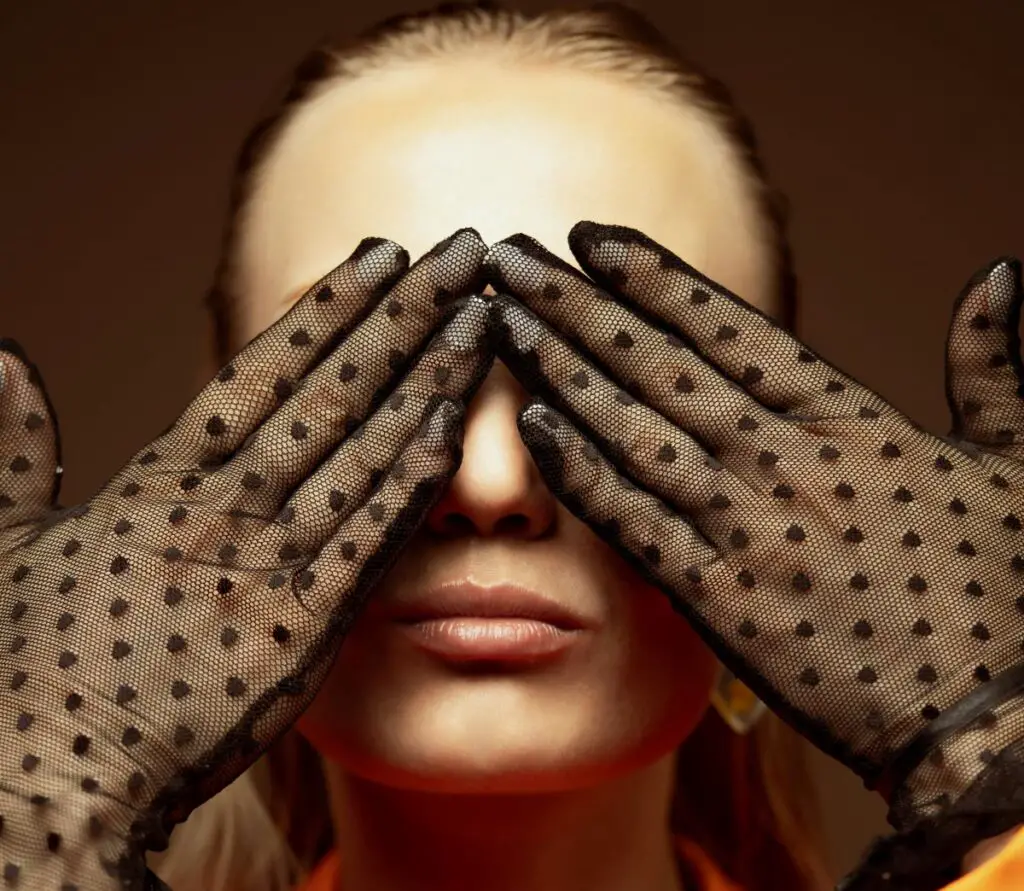Obsessive Skin Picking Disorder: Finding A Better Self-Soothing Option
For many autistic individuals, repetitive behaviors like picking at the skin provide comfort and relief from stress or anxiety. However, when picking at skin becomes excessive or causes tissue damage or scabs, it can cross the line into a more serious condition called excoriation or obsessive skin picking disorder.
 People with autism often have habits or mannerisms that commonly include rolling their eyes, biting their nails, stimming, and picking their skin. There is nothing wrong with having a self-soothing ritual; everyone has something they do calm themselves down when anxious, regardless of whether they are neurodiverse or neurotypical.
People with autism often have habits or mannerisms that commonly include rolling their eyes, biting their nails, stimming, and picking their skin. There is nothing wrong with having a self-soothing ritual; everyone has something they do calm themselves down when anxious, regardless of whether they are neurodiverse or neurotypical.
These behaviors only become a problem when they begin to affect a person’s overall health.
Individuals might be aware of downsides of behaviors like having an obsessive skin picking disorder, but often do them anyway. That’s because while they may affect their physical health, they seem to help with mental health and a sense of peace.
While this approach can work in the short term, it can negatively impact a person’s overall health in the long term. In the case of obsessive skin picking disorder, the picking can become so extreme that it causes wounds that can become infected and require a doctor’s care.
Not only does that cost money, but the wounds can also, in some cases, lead to scarring, and create some mental anguish and even shame when others notice.
It’s better to find a way to calm yourself without hurting your body (view my article about healthy calming strategies / stress busters). You may need the help and support of a therapist to help you to maintain self-control and to consciously understand that when you are picking your skin or doing something else self-destructive to soothe yourself that it’s not good for your health long-term.
Many experts say there are proven correlations between autism, repetitive behaviors, and obsessive skin picking disorder. While occasional skin picking can start as a self-soothing mechanism, it can become an obsessive-compulsive behavior that causes harm.
Luckily, there are ways to manage skin picking urges in healthy ways.
The Link Between Autism and Repetitive Behaviors
Repetitive body movements and behaviors are core features of having an autism spectrum disorder. These repetitive and restrictive behaviors may include:
- Hand flapping, finger tapping, or arm waving
- Rocking back and forth or side to side
- Pacing or spinning in circles
- Arranging toys or objects in a certain way
- Stacking or lining up objects
- Repeating words, phrases or sounds (vocal stimming)
- Opening and closing doors, drawers, or containers
- Sniffing hands or objects
- Repetitive blinking or eye gaze movements
Experts believe these repetitive behaviors provide sensory input that can be calming. The movements may also relieve anxiety or act as a way for an autistic individual to calm and regulate their emotions, especially during stressful situations.
Repetitive behaviors can sometimes become disruptive or harmful. However, in general, the behaviors start as a coping mechanism that gives comfort, entertainment, or a sense of safety.
The autistic individual is typically not trying to purposefully irritate others or cause self-harm. Rather, the behaviors provide relief at a sensory and emotional level.
Autism and Obsessive Skin Picking Disorder as a Self-Soothing Behavior

Skin picking behaviors exist on the spectrum. Mild skin picking may involve occasionally picking at a scab or blemish when feeling anxious. More habitual picking can develop into an obsessive skin picking disorder.
For some autistic individuals, skin picking provides sensory stimulation and relief from discomfort. The behavior can be similar to stimming by tapping fingers or rocking the body.
At first, skin picking may be harmless. But over time, it can turn into an uncontrollable compulsion.
Characteristics of Obsessive Skin Picking Disorder
Obsessive skin picking disorder or excoriation is classified as an obsessive-compulsive related disorder in the DSM-5 diagnostic manual. It is characterized by repeatedly picking at one’s own skin to the extent that damage and scarring occur.
Some key characteristics of skin picking disorder include:
- Habitual picking, biting, scraping or gouging of the skin anywhere on the body – most often face, lips, fingers, arms, and hands
- Attempts to stop or reduce skin picking consistently fail
- Skin picking causes significant distress, life disruption, and impairment
- The picking is not explained by a medical condition and is not caused by hallucinations or delusions
- Scars, scabs, sores, bruises or other skin damage from repetitive picking
Obsessive skin picking disorder is often estimated to impact 1-2% of the general population, according to experts. However, some studies suggest it occurs more frequently in people with autism or obsessive-compulsive disorder (OCD).
Here are some details about those findings.
- One study found that 15% of children with autism engaged in habitual skin picking to the point of visible skin damage.
- Skin picking tends to start in adolescence or young adulthood.
- It is more common in females than males. Up to 5.4% of adolescent girls may have clinically significant skin picking compulsions.
What Causes Obsessive Skin Picking Disorder?
There are likely multiple causes behind skin picking disorder including biological, neurological, genetic and environmental factors.
Potential contributors include:
- Imbalances in serotonin or dopamine neurotransmitters that regulate mood, impulse control and body focus/awareness
- Dysfunction in brain circuits regulating cognitive control, habit formation, and decision-making
- High levels of negative emotions or psychological distress
- Genetics – skin picking disorder can run in families
- Co-occurring mental health disorders like OCD, anxiety, depression or autism
- History of trauma or abuse
On a biological level, skin picking may be the brain’s attempt to balance low serotonin levels. Research shows that selective serotonin reuptake inhibitor (SSRI) medications can help reduce skin picking behaviors.
There also appear to be some shared genetic components between skin picking disorder, OCD and autism spectrum disorder.
But, as always, remember that I am not a medical professional. Individuals with a skin picking affliction should consult with their family doctor or therapist to decide if there is a treatment plan requiring medication.
If you or your child with autism suffers from severe and habitual skin picking, don’t lose hope. While stopping the destructive picking cycle can be challenging, a number of treatments and management approaches may help and may be worth you visiting with your doctor or therapist for advice.
You can ask about these possible behavioral and psychotherapy interventions and other recommendations.
- Cognitive behavioral therapy (CBT) to modify thoughts, feelings and behaviors around skin picking
- Habit reversal training (HRT) which uses competing response behaviors (e.g. making a fist) to interrupt skin picking
- Exposure therapy and response prevention to help tolerate the urge to pick without acting on it
- Acceptance and commitment therapy (ACT) to develop psychological flexibility around skin picking urges
Supportive Techniques for Obsessive Skin Picking Disorder
- Eliminate triggers—Apply makeup to cover blemishes and irritations that provoke picking
- Keep hands occupied—Use fidget toys, stretchy bands, kneading clay, squeezing balls as needed as a distraction
- Limit access—Cover picked areas with bandages or clothing
- Reduce skin contact—Use gloves or bandages on fingers
- Find distractions—Practice relaxation skills and distraction techniques when urges strike
- Reward progress—Treat yourself with verbal applause or something positive; even small wins matter!
The Dual Diagnoses: Autism and Obsessive Skin Picking Disorder
When autism spectrum disorder and skin picking disorder co-occur, it can be referred to as a dual or co-occurring diagnosis. The repetitive behaviors of autism may increase tendencies toward compulsive skin picking.
Likewise, the anxiety and social difficulties of autism can also fuel picking behaviors being used for sensory stimulation or stress relief.
Managing a dual diagnosis may require treating both conditions concurrently through coordinated therapies and medication management based on advice of your doctor and/or therapist.
Simply trying to eliminate skin picking without addressing the core symptoms of autism often leads to frustration and failure. The full clinical picture should be considered.
For individuals with a dual diagnosis, an ideal treatment team may include:
- Psychiatrist or psychiatric nurse practitioner to prescribe medications as needed for anxiety, depression, impulse control or obsessive thoughts.
- Cognitive behavioral therapist to provide habit reversal training and therapy targeted to skin picking disorder.
- Psychologist specializing in autism and co-occurring conditions who can address social skills, emotional regulation, sensory issues and managing change.
- Primary care doctor to treat any wounds caused by skin picking and rule out underlying dermatological issues.
- Occupational therapist to recommend sensory approaches like weighted blankets, fidget items, massage or joint compression.
- Support from family, friends and autism community organizations.
Treatment plans will be most successful when tailored to the individual’s needs, challenges, interests and strengths. There is no standardized formula. Patience is key, as progress may come slowly with occasional setbacks. With the right wraparound support, improved coping skills will emerge over time.
Medication can take the edge off the unrelenting urges to pick. But medication alone is rarely sufficient.
The most effective approach often combines medication with cognitive-behavioral psychotherapy for long-lasting change.
Possible Consequences of Obsessive Skin Picking Disorder

Physical problems:
- Pain, bleeding and increased risk of infection
- Scarring of the skin – this can become disfiguring over time
- Picking other people, leading to friction in relationships
- Isolating socially to hide skin damage from picking
Emotional problems:
- Shame, guilt and embarrassment over appearance or behavior
- Anxiety about future scarring if unable to stop picking
- Depression due to social isolation and feelings of lack of control
- Fear of judgment from loved ones or medical professionals
Severe skin picking can also impact daily functioning, relationships, work or academic performance. However, trying to use shame or criticism to get someone to stop picking rarely works, and often backfires. Compassion, acceptance and access to therapeutic support are more likely to generate positive change.
Skin picking doesn’t have to dictate a person’s future. But professional help is needed to break this disruptive cycle. With consistent effort and the right support, those with skin picking disorder can take back control and get relief from unrelenting picking urges.
The Importance of Understanding Obsessive Skin Picking Disorder
For autistic individuals struggling with skin picking, it’s vital that loved ones and professionals understand why this behavior occurs before trying to eliminate it.
There are valid sensory and emotional reasons why skin picking begins. Thus, the focus should be redirecting the behavior, not stopping it cold turkey.
With compassion and the right professional support, new coping skills can be learned over time. Habit reversal training is particularly effective for skin picking disorder. The goal is to replace skin picking with alternative sensory soothing activities that don’t cause harm.
It may take time to uncover what types of replacement activities provide comparable emotional and sensory relief.
There is no instant cure for an obsessive skin picking disorder, but with consistent effort behavioral changes are possible.
By better understanding the function obsessive skin picking disorder serves, individuals with autism and their loved ones can take control of this disorder and improve quality of life. There are many reasons to be hopeful!
Autism in Adults: Living, Learning, and Overcoming Challenges for a Fulfilled Life
Autism in adults requires additional support and coping skills to achieve independence in today’s world. Learn more about ways adults can live fulfilled lives and the challenges they face.
- 14 Practical Ways for Staying Motivated to Unlock Full Potential
- Autism and Independence: 7 Skills That Empower Individuals to Thrive
- Dangers of Social Media Addiction: How To Leave the Screens And Face the Real World
- Autism Volunteer Opportunities: 5 Ways Helping Others Fosters Acceptance
- 8 Heartfelt Ways Autism Emotional Support Animals Transform Lives
- Autism in the Future: Optimism for Improved Perception and Embracement
- Autism and AI: 7 Discoveries About the Surprise Pairing and Profound Impact
- Autism After High School: Is College the Next Step?
- Autism vs Asperger’s Syndrome: What You Need to Know
- Autism Disclosure: Is Revealing Your Disorder Helpful or Hurtful?
- Work and Autism: What Employers Should Know About Hiring People Like Me
- Drivers with Autism Can Achieve Success Behind the Wheel
- Exploring the Dark Side of Autism and Aggression
- Hope and How It Can Transform the Autism World